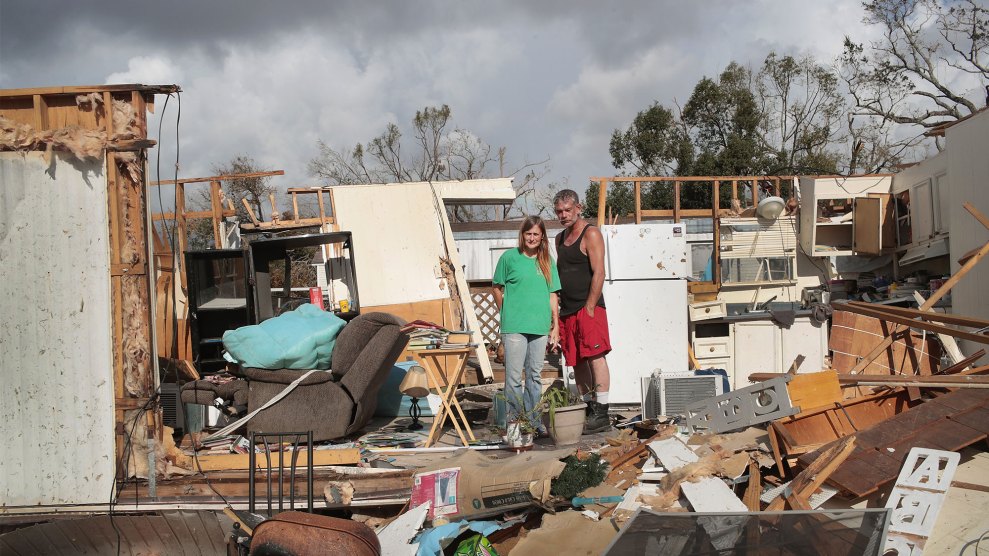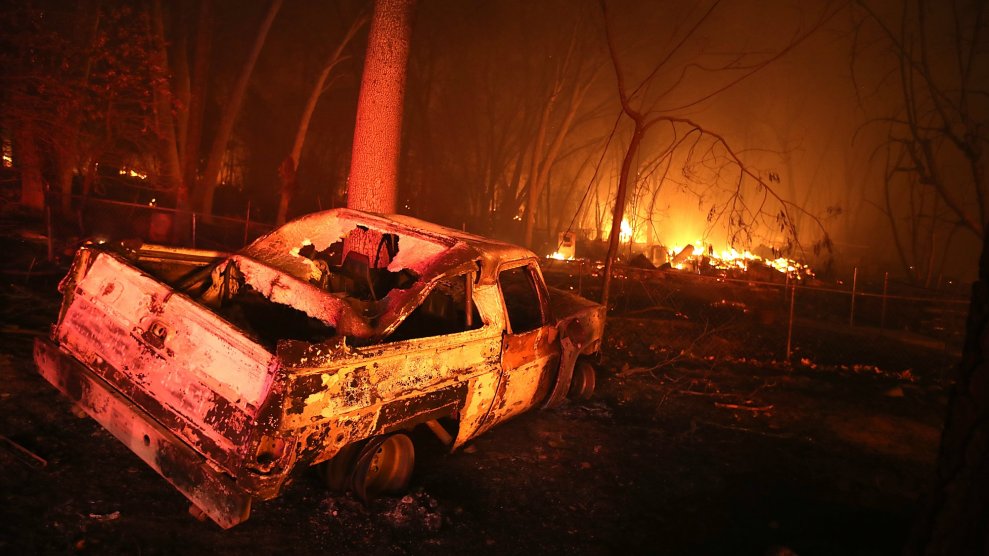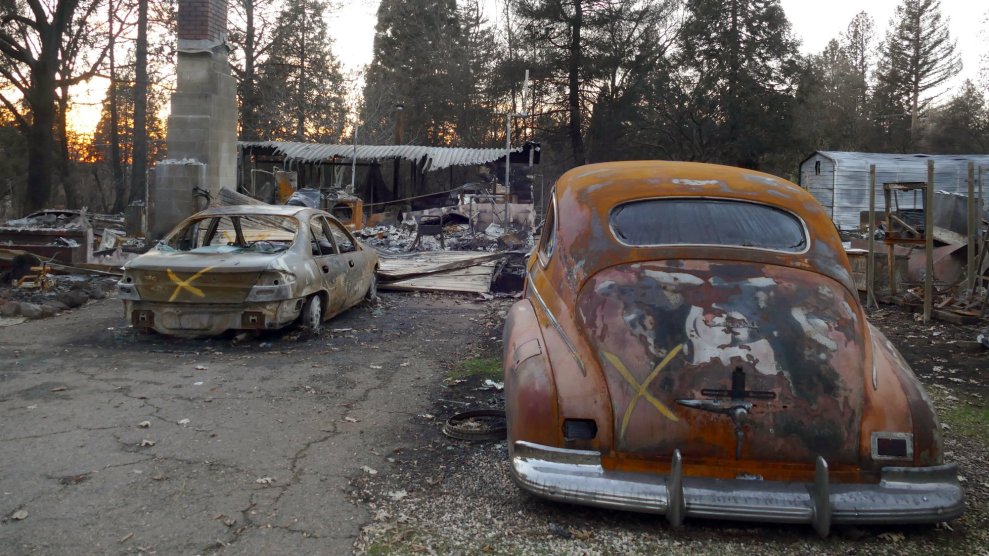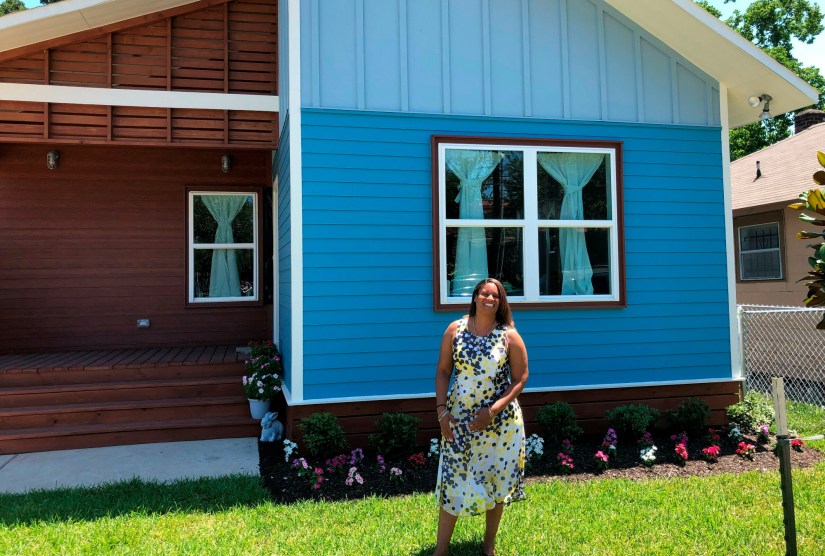
Scenacia Jones in front of her newly constructed Rapido houseJuan Lozano/AP
Scenacia Jones’ house on the east side of Houston is one big home improvement project. When I visited a few weeks ago, the sky-blue bungalow was scattered with a few telltale signs—half-full paint cans, plastic furniture wrap, and a couple of unhung light fixtures. It’s a far cry from what it looked like nearly a year ago, when Jones first moved in. Back then, it was just a little green pod, about the size of a Federal Emergency Management Agency trailer.
“It’s definitely been an experiment,” Jones, a 48-year-old single mother of two, tells me as she leads me on a tour of the house. “But I’d do it all again.”
Jones lost her home and most of her belongings in 2017, when Hurricane Harvey damaged or destroyed nearly half of Houston’s 500,000 homes. Almost exactly two years later, her life is finally starting to return to normal thanks to the pod, which was built as part of a local pilot project, called Rapido, that aims to revolutionize reconstruction after storms. Even under the best circumstances—when money from FEMA and the Department of Housing and Urban Development is flowing, or with the advantages of personal wealth—it can take homeowners years to rebuild after disasters. A year after Harvey, nearly 10 percent of displaced Texans still hadn’t returned home; two years after, hundreds of families are still living in FEMA trailers. In low-income neighborhoods, which typically get fewer resources following disasters, recovery can be nearly impossible. As extreme weather events become more frequent because of climate change, the need to think creatively about rebuilding after disasters is more necessary than ever.
“Given the increase in frequency and severity in storms in just the past few years, coupled with the underinvestment in low-income communities, there is a great urgency to not simply configure climate change and environmental issues into housing issues, but consider them a fundamental component of them,” says John Henneberger, co-director of Texas Housers, which spearheaded the Rapido project.
The Rapido model is relatively simple: Following a storm, contractors or even volunteers can build “the core”—basically a 400 square foot pod—out of prefabricated, interlocking panels in about a week. The core, with a small living room, bedroom, kitchenette, and bathroom, serves as housing in the immediate aftermath of a hurricane. It resembles the temporary trailers FEMA drops in disaster-ravaged communities, but unlike those trailers, Rapido cores form the permanent base of the home. As funds and labor become available, construction crews add on to the core with conventional construction methods to build a full house. The homeowner can continue to live in the home as it’s built around her. Rapido houses are designed to be more wind resistant than the average house and are elevated on a pier and beam foundation to prevent future flooding. According to Henneberger, the entire building process should take three to four months and cost about $150,000. FEMA trailers alone also cost up to $150,000 each, but are only approved for temporary use.
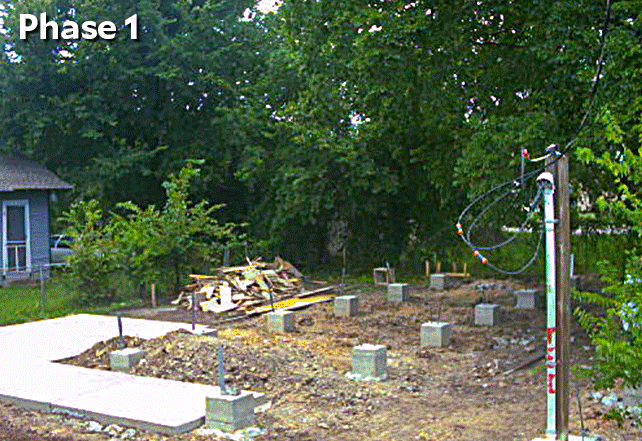
The Rapido construction process
Courtesy Texas Housers
Texas Housers hopes their model could be the answer. They first got the idea for prefabricated, modular disaster-relief housing in 2005, as they watched the glacially slow recovery process after Hurricane Rita drenched Texas’ Gulf Coast. “We watched the state try to start up a program that would rebuild owner-occupied homes,” says Henneberger. “And we began to really see the underfunding of people of color and whole low-income neighborhoods being left out of the process.”
In 2008, the group hosted a design competition to find a new model of post-disaster housing with the mandate to prioritize quick rebuilding for low-income families. The winning design was a temporary-to-permanent structure that allowed families to add on rooms, one by one, as they could afford it. The first 20 Rapido houses were built in the Rio Grande Valley in 2013, but the Joneses are the only family to actually live in the house while it was constructed around them, as it was designed.
“We decided that one of the things that we could do is step back and work with low-income people of color who had been through a disaster and try to look at the problem of recovery from their point of view,” says Henneberger, who won a MacArthur genius grant in 2014 for his work in post-disaster housing. “And that’s what Rapido is really trying to do. It’s a design approach to housing that’s based on this concept of a temporary house becomes a permanent house. But it’s also much more.”
Take Jones. She moved her family from Chicago to Houston in late 2008, not too long after another hurricane, Ike, had torn the city apart. They moved so her son, who has a rare chromosomal disorder, could receive care at Texas Children’s Hospital. Between relocating and near-constant hospital stays, money was tight. Still, whenever she had some spare cash, Jones started tucking it away in her “hurricane stash,” to use in case of emergency. She’d heard horror stories of people trying to evacuate but running out of gas because, with power outages, ATMs were down and none of the gas station credit card readers worked. By the time Harvey hit, she’d collected about $300.
“I didn’t know how far that $300 was going to take me, but I was going to use it,” she says.
It got her all the way to Dallas, where she and her kids waited out the storm. When they came home, almost all of their worldly possessions had been destroyed. The shelter they were staying at flooded, so the family moved into a hotel. The storage unit the family rented to keep their personal belongings in also took on water, so Jones and her daughter reluctantly put all of their rotting furniture and family photos in the trash. Jones had been saving for years to buy a house, but that dream seemed to be washed away in the storm too. Until she found out she was selected for the Rapido program.
“I’m screaming, I’m excited, I’m crying,” Jones says of her reaction to the news. “I got a house! I got a house! I got a house!”
Other policymakers have also looked at how prefab materials could aid in speedy and economically efficient disaster recovery. In the aftermath of Hurricane Katrina, FEMA allocated $400 million for a modular home pilot project along the Gulf Coast. New York City utilized modular homes to hasten the rebuilding process after Hurricane Sandy. Prefab homes have been suggested as an option to help rebuild wildfire-ravaged California, since they can be built to meet the state’s stringent fire and earthquake requirements. Modular housing could have other uses, too: Presidential hopeful Bernie Sanders gave a shoutout to zero-energy modular houses in his climate plan as a way to help low-income families reduce energy consumption. Earlier this month, the Center for American Progress recommended modular construction as a way to address the affordable housing crisis, which has been worsened by extreme weather events like flooding and wildfires.
But the attempts to integrate modular housing into disaster recovery has so far been largely unsuccessful. In New York City, the modular homes weren’t built until five years after Sandy. Despite its acclaim in the 2000s, the post-Katrina FEMA-funded pilot project never really caught on. With money from the feds, Mississippi was supposed to build 3,500 manufactured “Katrina Cottages” to accommodate those displaced by the storm. Ten years later, less than 100 had been constructed. Louisiana’s version of the program was more successful, but not by much. As one of the housing advocates involved in the Mississippi project wrote, “Almost all of us associated with [the project] failed to appreciate the difficulty of changing the way business is usually done, whether we’re talking infrastructure planning, zoning, housing finance or construction. As disaster recovery researchers note, the push in the wake of the trauma is to get things back to the way they were as quickly as possible, even if the way things were may have contributed to the community’s ability to recover more quickly.”
So how scaleable is Rapido? Its success largely depends on government’s investment in it, says Earl Randall, who worked at HUD from 2000 to 2018. Though it has so far been funded by charitable organizations, any version of the project that’s implemented on a large scale would need federal support. And here’s the snag: the program’s hallmark is its requirement that communities pre-plan for disasters, a strategy experts call “precovery.” In order for Rapido to be, well, rapid, the core’s panels need to be manufactured before disaster strikes so they can be deployed immediately. But right now, most disaster recovery planning happens after the fact. Local governments often don’t have pre-arranged recovery plans, and Congress only approves federal housing recovery funds on an as-needed basis, after the damage has been assessed.
“When it comes to disaster recovery, there are two things that are never on your side: time and politics,” says Randall. “On the housing recovery side, there’s always a push to find a method that’s quick, that’s effective and that bridges that gap between immediate response and long term recovery.”
FEMA funds are usually the first to reach communities, but the agency’s mandate requires that they only fund temporary shelter, which puts the Rapido program in a bit of a gray area. After Louisiana suffered a catastrophic flood in 2016, FEMA asked Henneberger to help officials in Baton Rouge develop a similar program. It seemed promising, but FEMA officials clarified, “the discussions [were] not to supplant any federal direct housing options,” like trailers or hotel vouchers, and the project ultimately went nowhere. HUD funds could, in theory, be used for Rapido projects, but the money trickles down slowly, often over years. To manufacture the Rapido panels ahead of time, local governments would have to foot the bill. Of course, they are reluctant to do this for fear they won’t be reimbursed.
To add to the post-disaster bureaucracy, many cities have zoning or permitting ordinances that prohibit manufactured structures on residential property. Local laws have to be formally amended to allow for alternative rebuilding practices.
“Activities like [permitting] tend to take a lot of time after disasters, and those are the things that are bottlenecks of disaster recovery,” says Sara Hamideh, an Assistant Professor of Coastal Resilience at Stony Brook University. Without the ability to temporarily amend or nullify certain building codes in Houston, it took Jones a full year after Hurricane Harvey to even be allowed to move into her Rapido core.
But things might be changing. This year, Texas passed its first-ever precovery law, which allows certain disaster-prone counties to submit a housing recovery plan to the governor for pre-approval. One of the provisions allows local government to suspend certain local permitting laws in the case of disaster. Henneberger is hopeful reforms like these mean they can start expanding the Rapido program. They’ve even created an online instruction manual to help other communities adopt the model.
“If Texas has been able to do it, then pretty much any other state should be able to do it too,” says Hamideh.
There’s also the Reforming Disaster Recovery Act of 2019, which is currently working its way through Congress. The bill would essentially pre-appropriate disaster recovery grant funds from HUD to disaster-prone states, so they can pre-plan for the worst. Seventy percent of those funds would be required to benefit low- to moderate-income people. The bill unanimously passed the House Subcommittee on Oversight and Investigations earlier this summer.
Henneberger says Jones’ move into a Rapido home shows that the model can be successful. The Texas Housers and their community partners are already planning for the next storm. With the help of state officials, they hope to quickly roll out a moderate-scale Rapido test next time disaster strikes.
Meanwhile, Jones’ Rapido experiment is almost over. She’s gone back to tucking away money in her hurricane stash whenever she can, but that’s not enough to make her want to leave the city.
“Now that we’ve got a house, Houston is finally home.”

